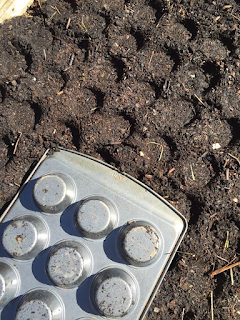What is an urban farmer to do to fit in?
Beautify
The most important feature of an urban farm is, of course, the production of locally grown, sustainable, delicious fruits and vegetables. That said, the farm must be as attractive as possible. The time spent keeping weeds in check in the vegetable beds is well worth the effort. Although I don't have a Scott's lawn care subscription, I mow and weed the grass to keep the lawn we have fitting in with the general look of the neighborhood (and those bagged grass clippings are a great treat for the chickens!).
Adding flowers around the chicken coop, for example, shows that I value creating a space that is not only productive, but is aesthetically pleasing to be in and look at.
 |
| Planting ornamentals around food crops and animal housing adds color and visual interest. |
Keep it clean
My neighbors want to be able to enjoy their yards just as much as I want to use-- and enjoy-- my own place. Keeping clean is a way to show respect for them and also helps me to maintain a relaxing space of my own. While we worked on building the chicken run this week, we made sure to clean up each night and leave the area looking orderly. Once the chickens are at home in the new coop, keeping the area clean and free of smells is priority #1. Unlike on a farm (where there is endless room to hide animals) an urban farm yard is used not just for farming but for weekend barbecues and tossing the ball around with your family. I appreciate clean and neat spaces just as much as my neighbors.
 |
| My neighbor's fence is next to these beds, so hopefully they will enjoy the view of the veggies. |
To have friends you have to be a good friend. And I need the support of my neighbors in order to be successful. Keeping them informed of what I am up to is important so that they aren't surprised by something that may at first seem out of place in town. Also, sharing a few eggs or some of the bumper tomato crop helps them feel like they are an important part of the urban farm (because they are!).
Thank you, good neighbors! (You know who you are!)
 |
| Someday soon I'll have organically grown onions to share. |













